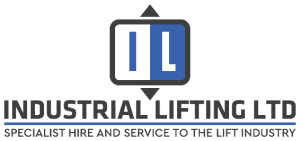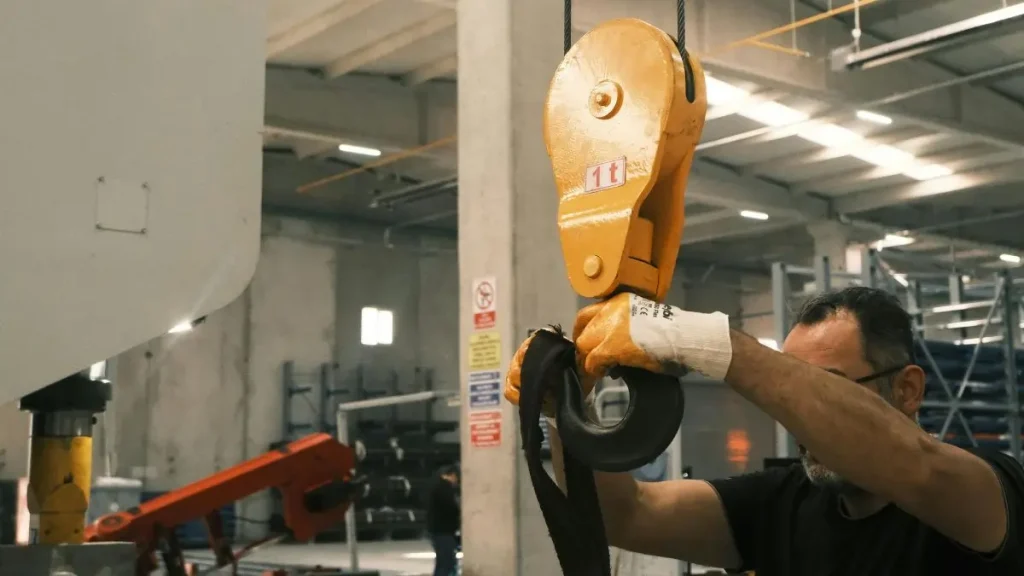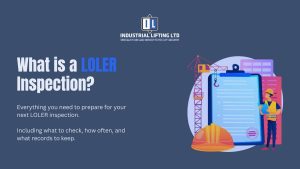Why Testing is Critical for Lifting Equipment Safety in the UK
When you’re working with lifting equipment, safety isn’t just important — it’s the law. In the UK, regulations like LOLER and BS EN standards require equipment to be tested regularly to ensure it’s safe, reliable, and ready for the job.
But here’s where many people get caught out: not all lifting tests are the same. You’ve probably heard of proof load tests and load tests — and maybe even thought they were interchangeable. In reality, they serve very different purposes, and knowing the difference can save you time, money, and potential downtime.
In this guide, we’ll break down exactly what each test involves, how they fit into UK lifting safety requirements, and when you should be booking a proof load test or a load test for your equipment.
What is a Load Test in the Lifting Industry?
A load test is performed to check that lifting equipment can safely handle its working load limit (WLL) during normal operations.
📦 What is WLL?
WLL (Working Load Limit) is the maximum safe load that lifting equipment can carry during normal use. It’s set by the manufacturer and always lower than the breaking strength to include a safety margin. For example, a shackle with a WLL of 2 tonnes can safely lift up to 2 tonnes, but exceeding this limit risks equipment damage, safety failures, and breaches of UK regulations like LOLER.
Purpose:
Verifies that equipment performs as expected under its intended load.
Confirms correct operation of mechanical parts and safety systems.
When it’s done:
As part of routine inspection and maintenance.
After repairs or alterations.
Before returning equipment to service after long storage.
What is a Proof Load Test?
A proof load test takes things further. Instead of testing at the normal working load, the equipment is tested with a higher-than-normal load — often 1.25 to 1.5 times the WLL, depending on regulations and equipment type.
Purpose:
Demonstrates that the equipment’s structure and components can withstand loads beyond everyday use without permanent deformation or failure.
Provides assurance for certification and compliance.
UK Standards:
Proof load testing is often carried out in accordance with LOLER (Lifting Operations and Lifting Equipment Regulations) and relevant BS EN standards, ensuring both legal compliance and safety.
Proof Load Testing in Action: A Real Example
Recently, one of our LEEA-qualified engineers, Ben, carried out a proof load test on a ram stillage unit.
The unit was rated to hold 240kg per hook, so under LOLER requirements, we tested it at 300kg. That’s 25% above its working load limit (WLL).
The result?
❌ It failed.
The weld didn’t hold, the hook bent, and the structure cracked under the increased load. To confirm the weakness, we rigged the stillage with a sling and repeated the process. The stillage couldn’t take the pressure.
The unit has now been removed from service and will be fully re-welded and re-tested before being put back to work.
This is exactly why LOLER insists on proof load testing. It finds potential hazards before they cause accidents.
✅ Real testing.
✅ Real compliance.
✅ Real safety.
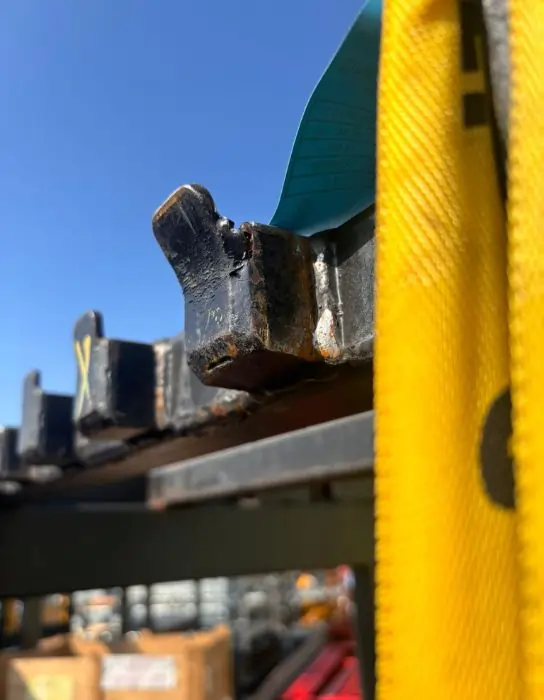
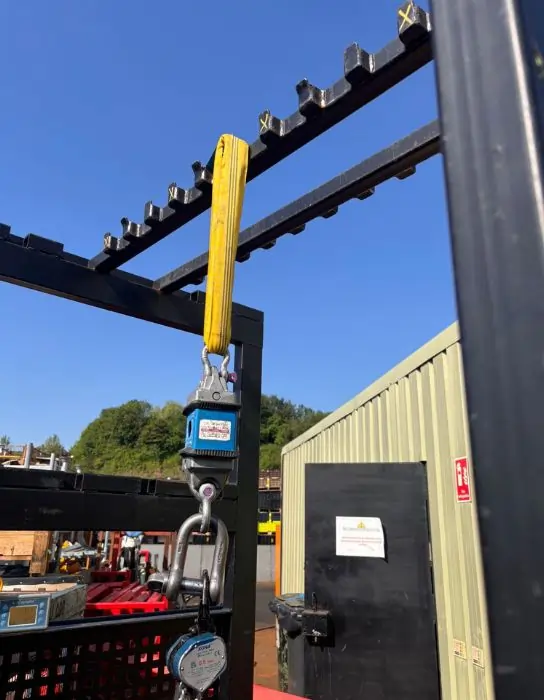
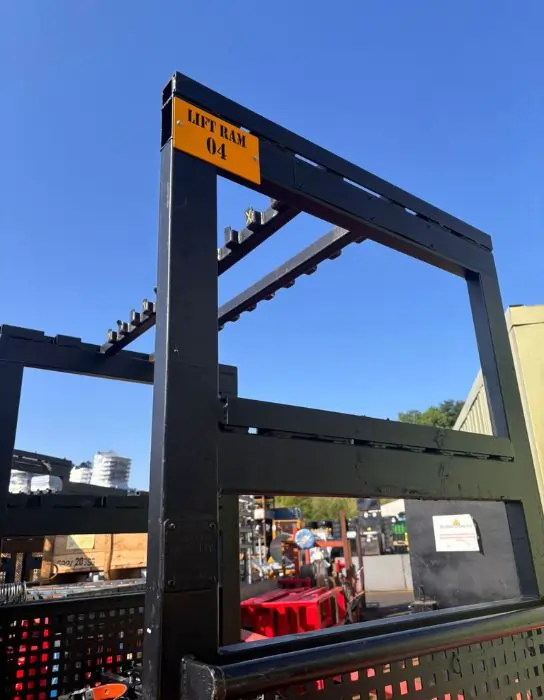
Proof Load Test vs Load Test: Side-by-Side Comparison
| Feature | Load Test | Proof Load Test |
|---|---|---|
| Load Applied | At Working Load Limit (WLL) | Above WLL (typically 1.25–1.5×) |
| Purpose | Checks safe operation under normal load | Verifies structural integrity under higher load |
| Frequency | Regular intervals or after repairs | Usually at commissioning, after major repair, or for certification |
| Risk | Low – within operational limits | Higher – requires careful control to prevent damage |
| Regulatory Link | Part of ongoing maintenance & LOLER compliance | Often required for certification & initial commissioning |
Why the Difference Matters
Knowing which test you need can save time, money, and potential downtime.
Safety: Proof load tests confirm that equipment can handle unexpected stresses, while load tests ensure safe daily operation.
Compliance: UK law requires lifting equipment to be safe and fit for purpose — the right test helps prove it.
Cost Control: Over-testing can risk unnecessary wear, while under-testing can risk safety failures.
Industrial Lifting Ltd’s Testing Services
At Industrial Lifting Ltd, we carry out both proof load tests and load tests to UK safety standards, ensuring your lifting equipment meets all LOLER and BS EN requirements.
Our services include:
On-site and workshop-based testing.
Certified test rigs and calibrated measurement systems.
Detailed reports for compliance records.
Experienced technicians who prioritise safety and accuracy.
Conclusion
Both proof load testing and load testing play vital roles in keeping lifting operations safe and compliant in the UK. Knowing when to use each can help you maintain safety, meet legal requirements, and avoid costly downtime.
Need expert testing? Contact Industrial Lifting Ltd today to arrange your load or proof load test — and ensure your lifting equipment is ready for anything.
FAQ’s
Is proof load testing a legal requirement in the UK?
Not always. It depends on the equipment, its intended use, and applicable regulations. However, many commissioning and certification processes require it.
Can proof load testing damage equipment?
If done incorrectly, yes. That’s why it should only be carried out by trained, certified professionals using calibrated equipment.
How often should lifting equipment be tested?
LOLER requires thorough examinations at set intervals (typically every 6–12 months), but frequency depends on equipment type, usage, and industry.
